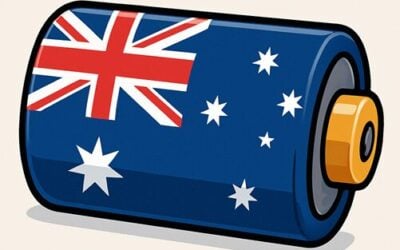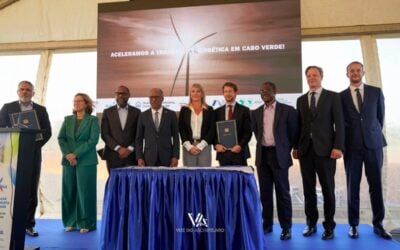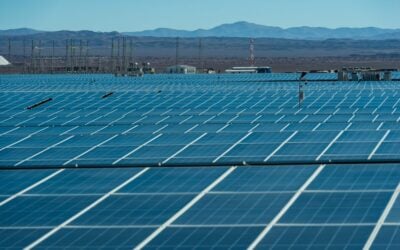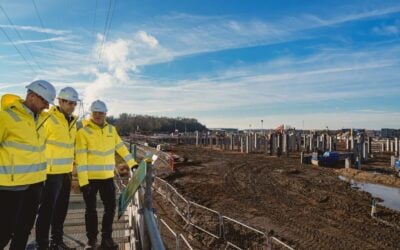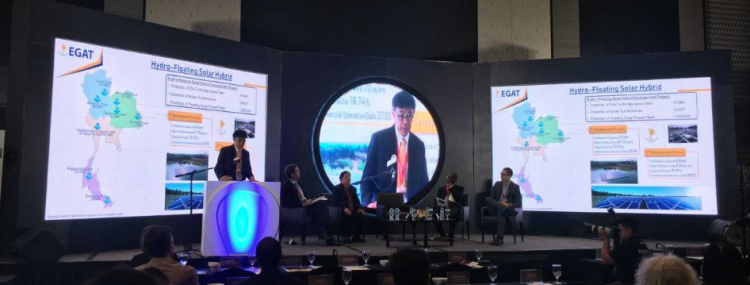
State-run utility Electricity Generating Authority of Thailand (EGAT) is planning to facilitate 1GW of hybrid floating solar-hydro projects across eight dams throughout the country.
Thepparat Theppitak, deputy governor, power plant development and renewable energy, EGAT, announced the plans at the ASEAN Solar + Storage Congress & Expo in Manila, the Philippines, organised by Leader Associates.
The first two projects, located in the Northeast, are already in the development phase, including 45MW(AC) of contracted capacity at Sirindhorn Dam, with a commercial operation date expected in 2020. A second 24MW(AC) project at Ubol Ratana Dam is due to come into commercial operation in 2023.
Theppitak told PV Tech that building of the first project should get underway in January next year. The plans also complement the fact that Thailand already has a hydropower plan and the country wants to have a test bed for floating PV, he added. EGAT seas a potential water surface area of 16km2 across the eight dams earmarked for this first phase.
Try Premium for just $1
- Full premium access for the first month at only $1
- Converts to an annual rate after 30 days unless cancelled
- Cancel anytime during the trial period
Premium Benefits
- Expert industry analysis and interviews
- Digital access to PV Tech Power journal
- Exclusive event discounts
Or get the full Premium subscription right away
Or continue reading this article for free
Battery storage pilots
The Thai government is also working on tests for battery energy storage with two big projects standing at 22MWh and 16MWh capacity being used for frequency regulation and to enhance system flexibility.
Moreover, Theppitak suggested that once battery costs come down far enough, EGAT will also consider having batteries at the hybrid floating solar-hydro projects.
Even though hydro complements the variable power generation of solar power, due to hydro’s fast response times, Theppitak said smooth generation can still be an issue, so EGAT is considering including batteries to fill the gap between hydro and solar generation to make it even more stabilised.
Franck Constant, president of PV developer and investor, Constant Energy, said that the announcements showed perhaps the most prominent change in the Thailand renewable energy space over the last year – the fact that a state-run utility like EGAT is starting to buy into new energy solutions like storage and floating solar.
Last year, Thailand also opened the door to energy storage through its ‘firm’ power tender. For solar and wind developers to participate, they had to add energy storage capabilities in order to smooth generation and counter the variability of power supply from these technologies. As an example, Visait Hansaward, MD of Thailand-based developer, Blue Solar, explained how his company had been selected to set up a 42MW solar project combined with 12MW/54MWh of energy storage.
Alternative power plan coming soon
Theppitak’s update on installed solar capacity put PV at 2,551MW, although other delegates said that capacity had gone well beyond 3GW already.
EGAT’s figures show 1,656MW of solar installed in the central region, 504MW in the Northern region, 390MW in the Northeast, but just 1MW in the South.
Theppitak also confirmed that Thailand’s next edition of its Alternative Energy Development Plan (AEDP) should be announced before the end of this year.
Constant said that the Minister of Energy, who had disclosed some of the AEDP material, had already made it clear that batteries will play a key role in the future of Thailand’s energy system.
For the C&I sector, Florian Bennhold, MD of Symbior Solar, said that the difference between peak and off-peak prices in Thailand are minimal, which hits revenue gain when using storage for peak shaving and he added that the regulatory framework right now does lend itself particularly well to storage. However, his firm does see special cases like C&I customers wanting energy storage specifically for backup functions as the low hanging fruit in this segment.
Yisha He, chairman of China-based firm Unisun Energy Group said that Thailand already has a huge focus on electric vehicles (EVs) and has much of the car industry manufacturing value chain in-country already, so the proliferation of EVs should also help the Southeast Asian country to see decreased battery costs for stationary storage applications quicker than many people are expecting.
Back in March, EGAT signed a memorandum of understanding (MoU) with Hawaii Natural Energy Institute, University of Hawaii, to measure and study the ability of Thailand’s grid to integrate renewable energy.

